Lecture 09:
Memory in RL
Artyom Sorokin | 08 Apr
Memory is Important

in many tasks, but we start from Reinforcement Learning...
Working Memory
Markov Decision Process
Basic Theoretical Results in Model-Free Reinforcement Learning are proved for Markov Decision Processes.
Markovian propery:
In other words: "The future is independent of the past given the present."
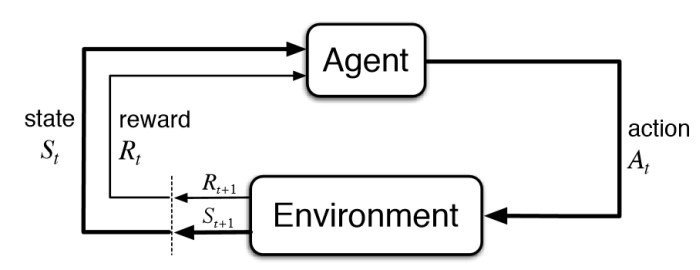
When does agent observe the state?

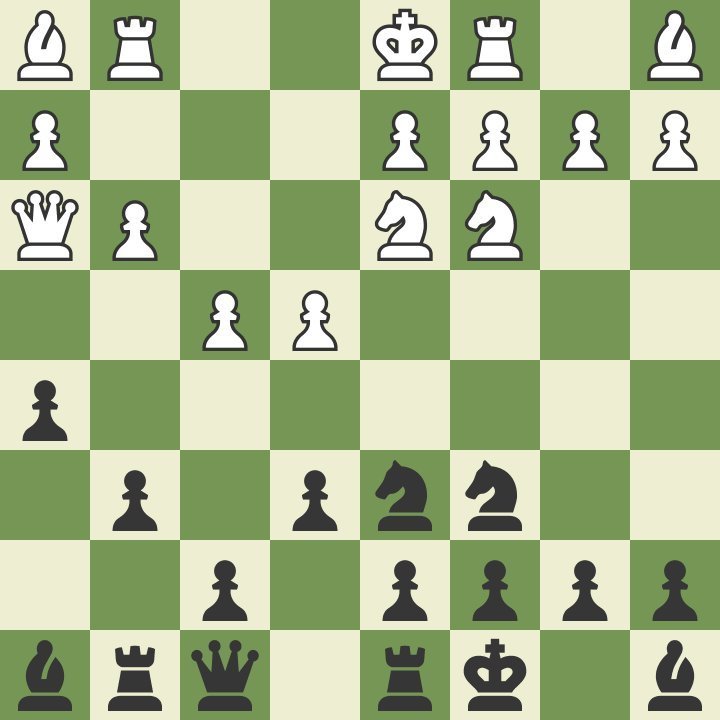

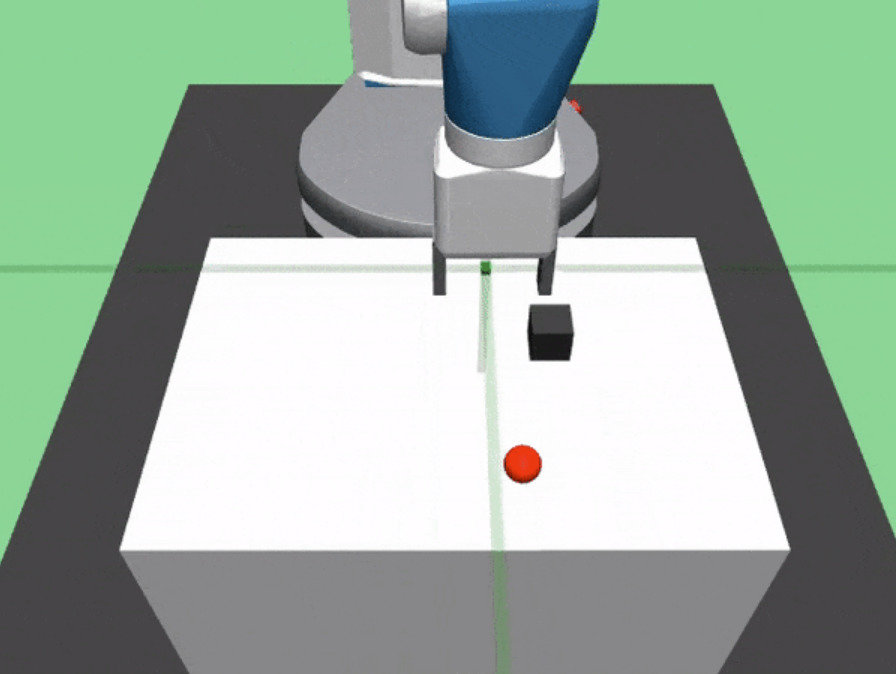
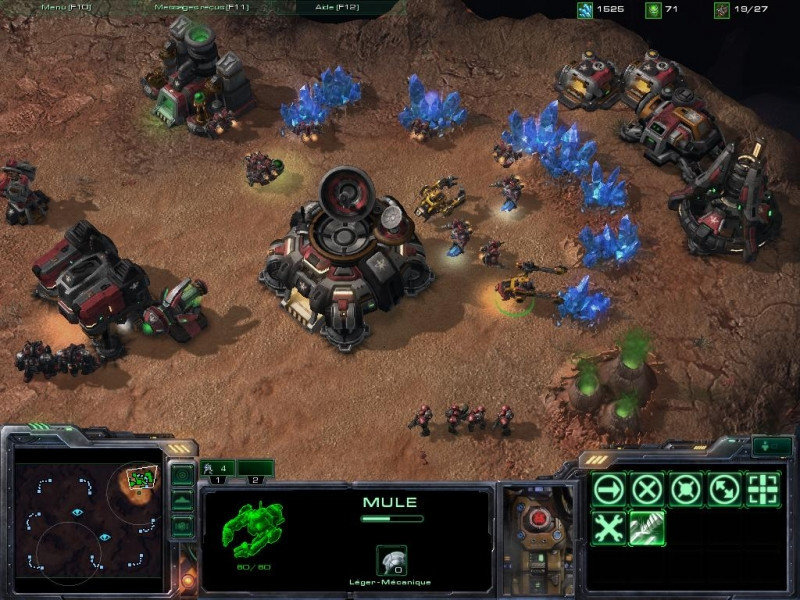

Partially Observable MDP
Definition
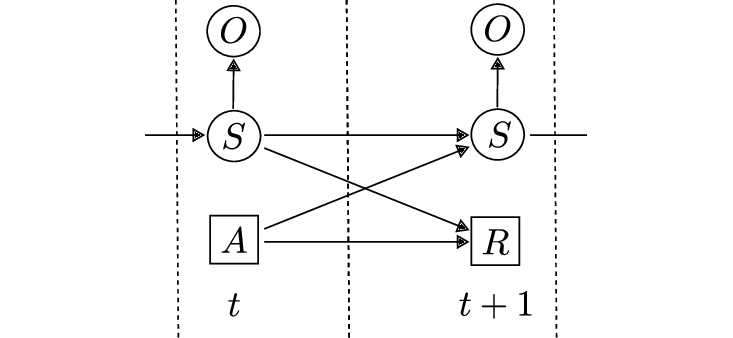
Graphical Model for POMDP:
POMDP is a 6-tuple \(<S,A,R,T,\Omega, O>\):
- \(S\) is a set of states
- \(A\) is a set of actions
- \(R: S \times A \to \mathbb{R}\) is a reward function
- \(T: S \times A \times S \to [0,1]\) is a transition function \(T(s,a,s\prime) = P(S_{t+1}=s\prime|S_t=s, A_t=a)\)
- \(O\) is a set of observations.
- \(\Omega\) is a set of \(|O|\) conditional probability distributions \(P(o|s)\)
Partially Observable MDP
Exact Solution
A proper belief state allows a POMDP to be formulated as a MDP over belief states (Astrom, 1965)
Belief State update:
General Idea:
Belief Update "Beilief" MDP Plan with Value Iteration Policy
Problems:
- Need a model: \(p(o|s)\) and \(p(s'| a, s)\)
- Can compute exact belief update only for small/simple MDP

Huge sum or even integral over all states
Learning in POMDP
Choose your fighter
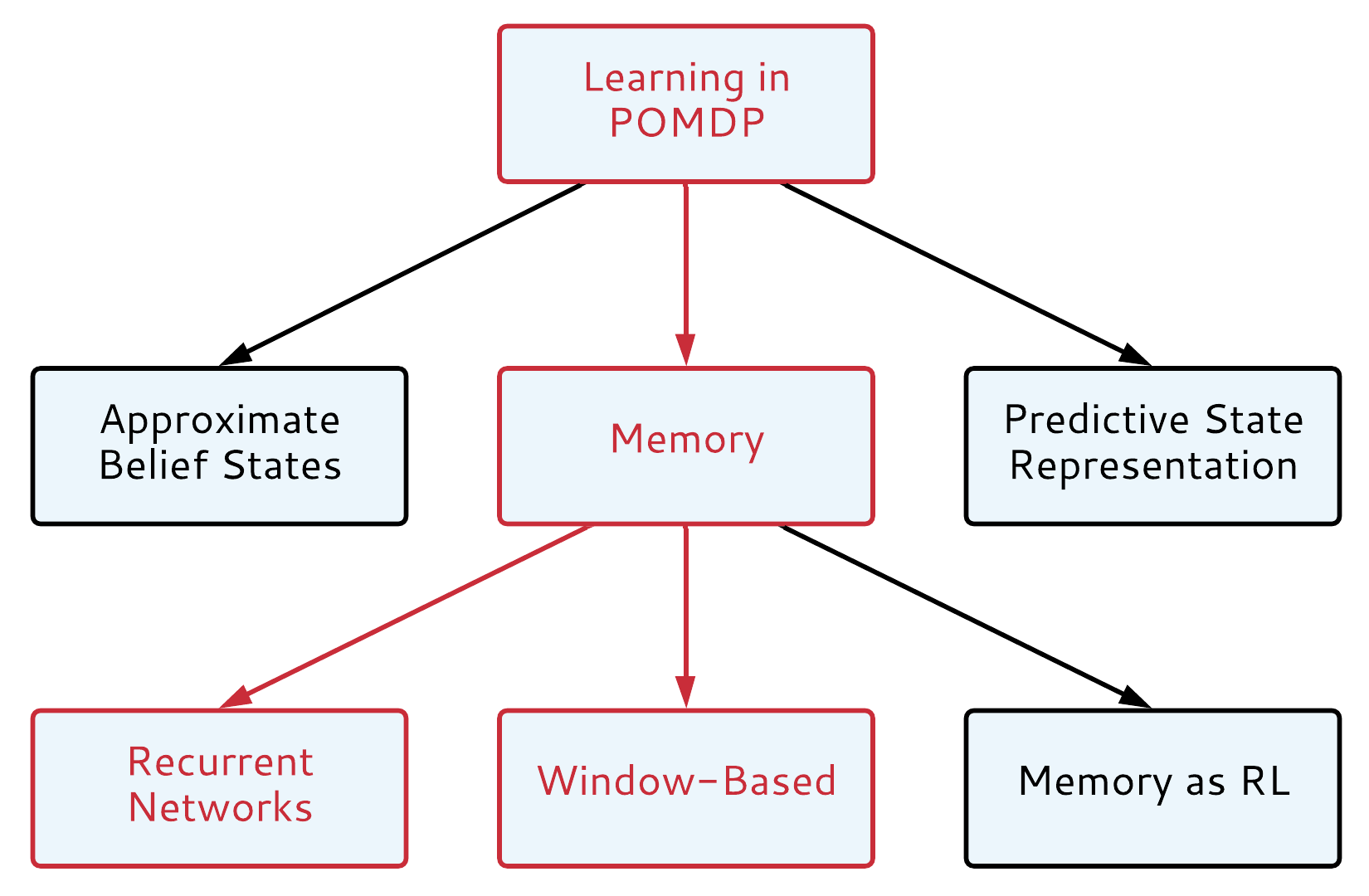
Learning in POMDP
Don't Give Up and Approximate
Approximate belief states:
- Deep Variational Belief Filters(Karl et al, ICLR 2017)
- Deep Variational Reinforcement Learning for POMDPs(Igl et al, ICML 2018)
- Discriminative Particle Filter Reinforcement Learning(Ma et al, ICLR 2020)

(Ma et al, ICLR 2020)
Learning in POMDP
Look into the Future
Predctive State Representations:
- Predictive State Representations (Singh et al, 2004)
- Predictive-State Decoders: Encoding the Future into RNN (Venkatraman et al, NIPS 2017)
- Recurrent Predictive State Policy Networks (Hefny et al, 2018)
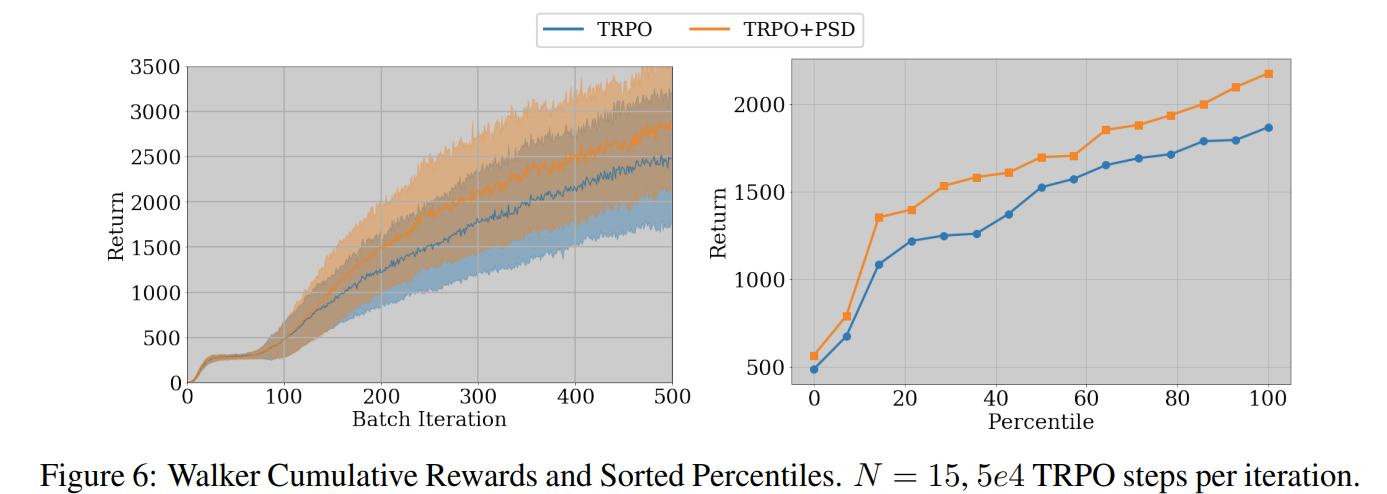
Learning in POMDP
Relax and Use Memory
Window-based Memory:
- Control of Memory, Active Perception, and Action in Minecraft (Oh et al, 2016)
- Stabilizing Transformers For Reinforcement Learning (Parisotto et al, 2019)
- Obstacle Tower Challenge winner solution (Nichols, 2019)*
Memory as RL problem:
- Learning Policies with External Memory ( Peshkin et al, 2001)
- Reinforcement Learning Neural Turing Machines (Zaremba et al, 2015)
- Learning Deep NN Policies with Continuous Memory States (Zhang et al, 2015)
Recurrent Neural Networks:
- DRQN (Hausknecht et al, 2015)
- A3C-LSTM (Mnih et al, 2016)
- Neural Map (Parisotto et al, 2017)
- MERLIN (Wayne et al, 2018)
- Relational Recurrent Neural Networks (Santoro et al, 2018)
- Aggregated Memory for Reinforcement Learning (Beck et al, 2020)
Why We Need Working Memory?



\(obs_{t=10}\)
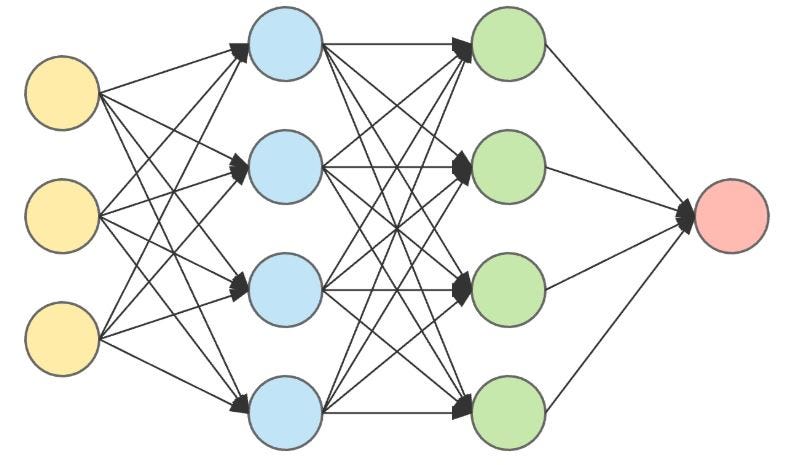
\(obs_{t=12}\)
\(obs_{t=20}\)


\(act_{t=10}\)
\(act_{t=12}\)
\(act_{t=13}\)
We need this information
At this moment!
Memory
. . .
. . .
Recurrent Memory:



\(obs_{t=10}\)

\(obs_{t=12}\)
\(obs_{t=20}\)


\(act_{t=10}\)
\(act_{t=12}\)
\(act_{t=20}\)
\(h_{10}\)
. . .
. . .
\(h_9\)
\(h_{19}\)
. . .
. . .
. . .
Information
Gradients
Problem with RNNs:
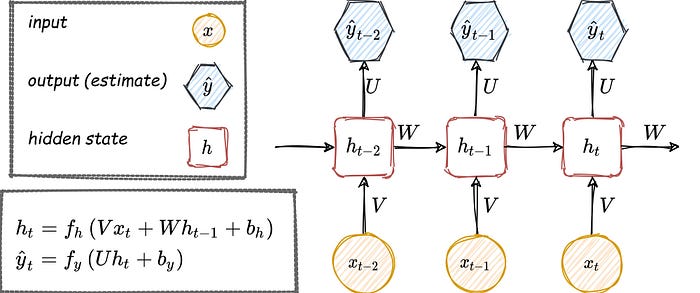

Solutions for Vanishing Gradients
Fight RNN problems by building more complex RNNs
Long-Short Term Memory: LSTM

Differential Neural Computer: DNC

Window Based Memory:



\(obs_{t=10}\)

\(obs_{t=12}\)
\(obs_{t=20}\)


\(act_{t=10}\)
\(act_{t=12}\)
\(act_{t=20}\)
. . .
. . .
Memory Window
Information
Gradients
Soft-Attention:
\(obs_{t=10}\)
\(obs_{t=12}\)
\(obs_{t=20}\)

. . .
. . .



\(e_{10}\)
\(e_{12}\)
\(a_{10}\)
\(e_{20}\)
Embeddings
Query
\(a_{12}\)
Attention weight: \(a_t = {e_{t}}^T q/\sum_i {e_{i}}^T q \)
\(q\)
Soft-Attention:
\(obs_{t=10}\)
\(obs_{t=12}\)
\(obs_{t=20}\)

. . .
. . .



\(e_{10}\)
\(e_{12}\)
\(a_{10}\)
Embeddings
Query
\(a_{12}\)
Context Vector \(c_{20} = \sum_t a_t e_t\)
Attention weight: \(a_t = {e_{t}}^T q/\sum_i {e_{i}}^T q \)
\(q\)
Transformer Basics: Self-Attention



Transformer Basics: Self-Attention

Self-Attention computation:

Each \(z_t\) contains relevant information about \(o_t\) collected over all steps in
Memory Window:
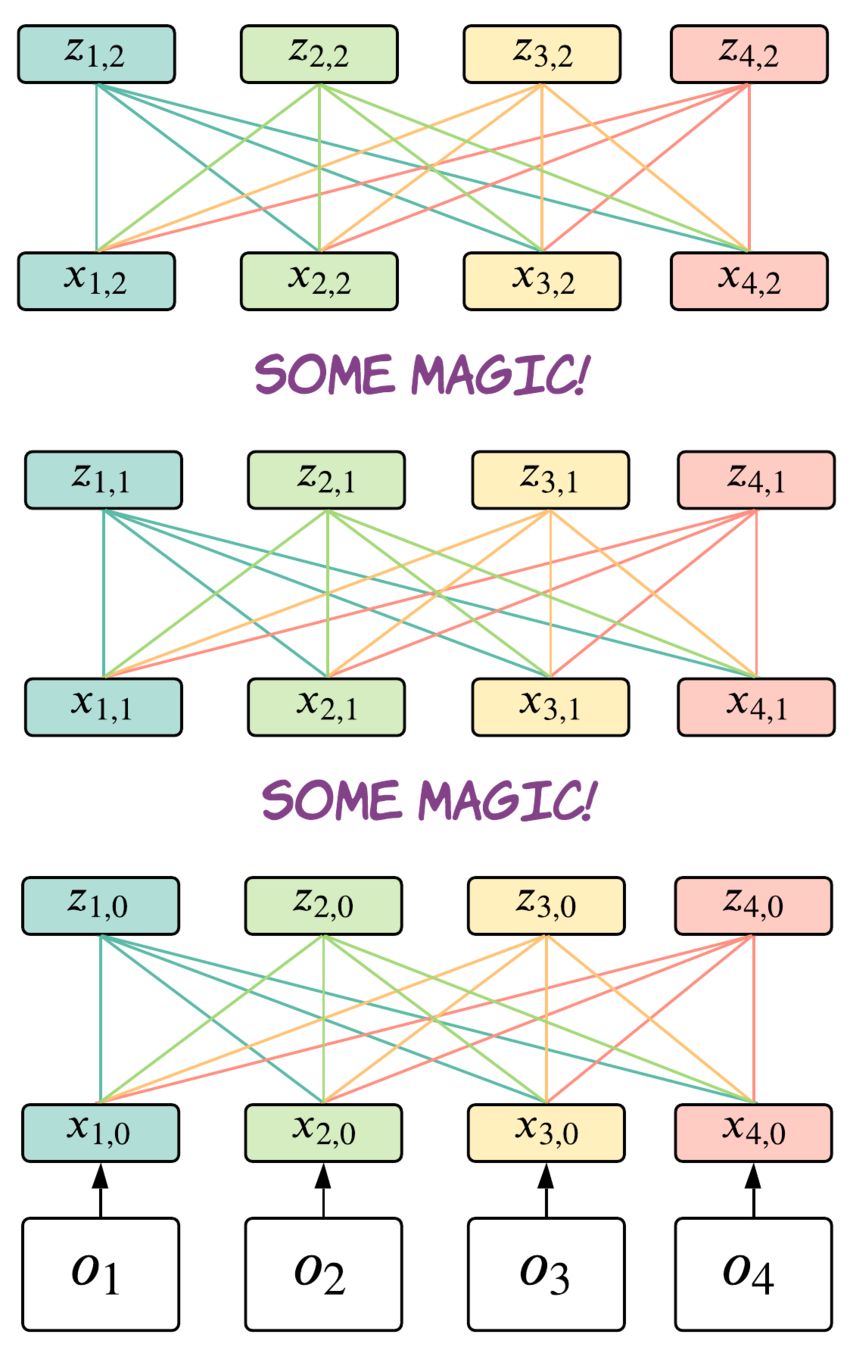
Full Transformer

This is how real Transformer looks:
Kind of...
This is how real Transformer looks:

Transformer:
- All time-steps in a memory window attends to all other time-steps
- For each time-step you have: Query \(q_t\), Key \(k_t\), Value \(v_t\)
- Transformer has N attention heads!
- Transformer uses positional encoding to relate different time steps temporarily
- You repeat this process for several layers!
Transformer
Attention is All You Need!

AutoEncoders
Variational AutoEncoder: VAE
AutoEncoder
Just add LSTM to everything
Off-Policy Learning (DRQN):
- Add LSTM before last 1-2 layers
- Sample sequences of steps from Experience Replay
On-Policy Learning (A3C/PPO):
- Add LSTM before last 1-2 layers
- Keep LSTM hidden state \(h_t\) between rollouts
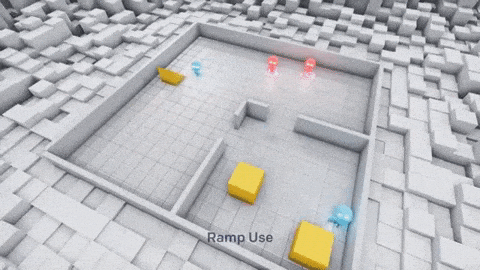
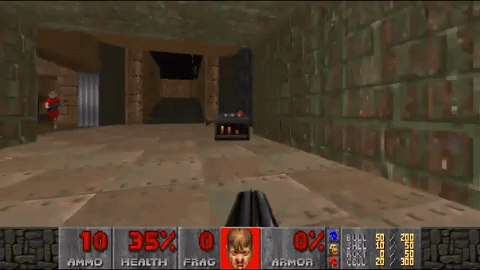
Asynchronous Methods for Deep Reinforcement Learning (Mnih et al)
Deep Recurrent Q-Learning for Partially Observable MDPs
(Hausknecht et al.)
Just add LSTM to everything
Just add LSTM to everything
Default choice for memory in big projects
"To deal with partial observability, the temporal sequence of observations is processed by a deep long short-term memory (LSTM) system"
AlphaStar Grandmaster level in StarCraft II using multi-agent reinforcement learning (Vinyalis et al)

Just add LSTM to everything
Default choice for memory in big projects
"The LSTM composes 84% of the model’s total parameter count."
Dota 2 with Large Scale Deep Reinforcement Learning (Berner et al)
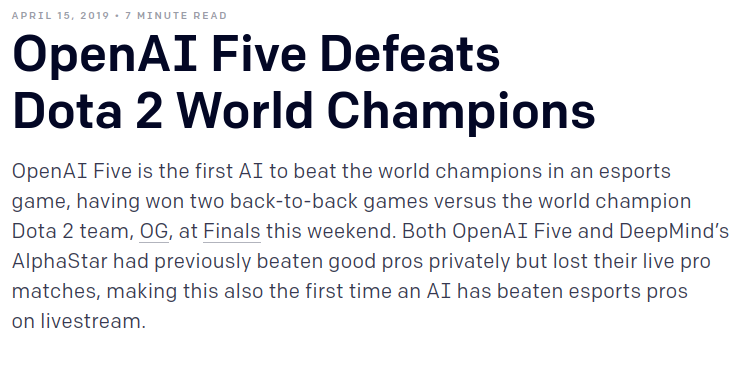
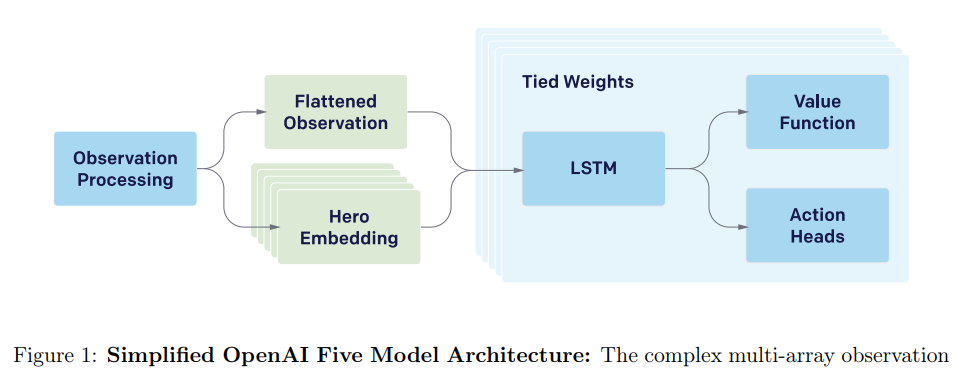
R2D2: We can do better
DRQN tests two sampling methods:
- Sample full episode sequences
- Problem: sample correlation in mini-batch is proportional to the sequence length
- Sample random sub-sequences of length k (10 steps in the paper)
- Problem: initial hidden state is zero at the start of a rollout
Recurrent Experience Replay in Distributed Reinforcement Learning (Kapturowski et al.)

R2D2: We can do better
R2D2 is a DRQN build on top of Ape-X (Horgan et al, 2018) with addition of two heuristics:
- Stored state: Storing the recurrent state in replay and using it to initialize the network at training time
- Burn-in: Use a portion of the replay sequence only for unrolling the network and producing a start state, and update the network only on the remaining part of the sequence
Burn-in - 40 steps, full rollout - 80 steps
Recurrent Experience Replay in Distributed Reinforcement Learning (Kapturowski et al)

R2D2
Results: Atari-57

R2D2
Results: DMLab-30
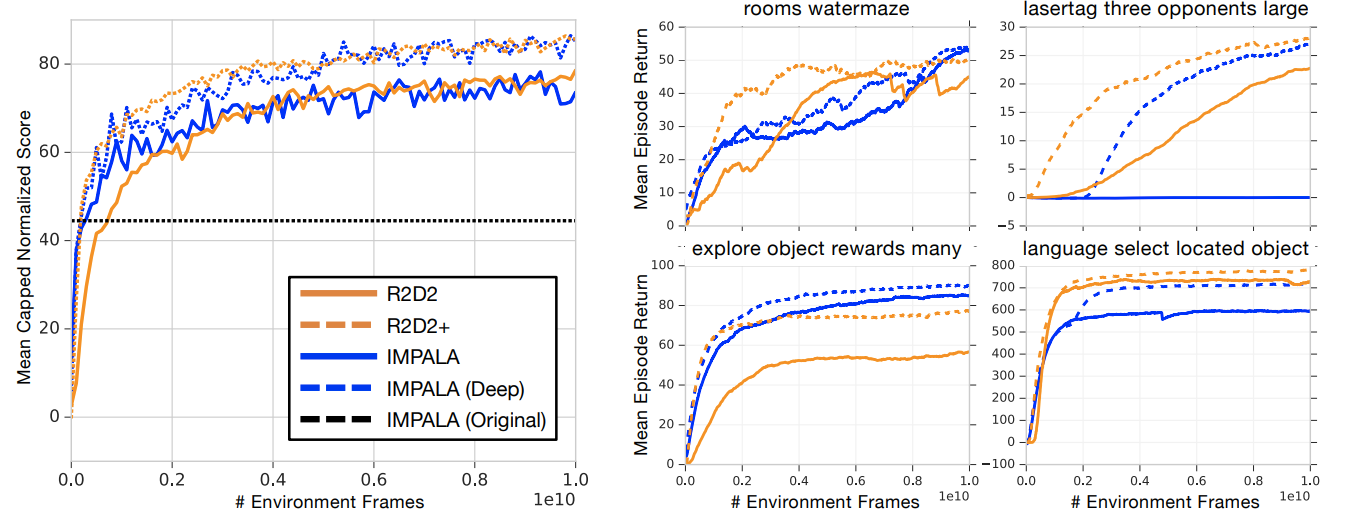
Recurrent Experience Replay in Distributed Reinforcement Learning (Kapturowski et al)
AMRL
Motivation
Recurrent Neural Networks:
-
good at tracking order of observations
-
susceptible to noise in observations
-
bad at long-term dependencies
RL Tasks:
-
order often doesn't matter
-
high variability in observation sequences
-
long-term dependencies
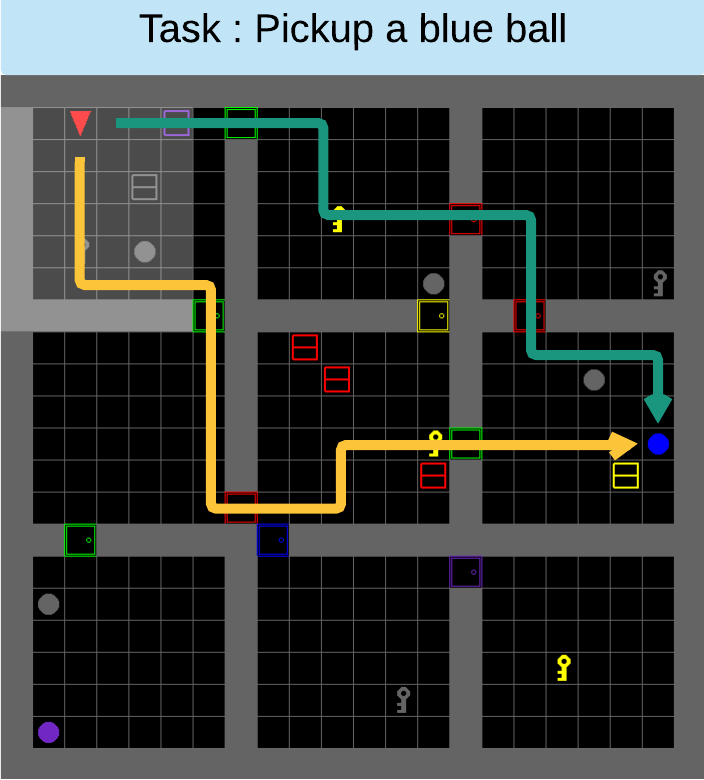
AMRL: Aggregated Memory For Reinforcement Learning
AMRL:
Robust Aggregators
Add aggregators that ignore order of observations: Agregators also act as residual skip connections across time. Instead of true gradients a straight-through estimator(Bengio et al., 2013) is used.

AMRL: Aggregated Memory For Reinforcement Learning
AMRL
Architecture and Baselines

AMRL: Aggregated Memory For Reinforcement Learning
AMRL
Experiments
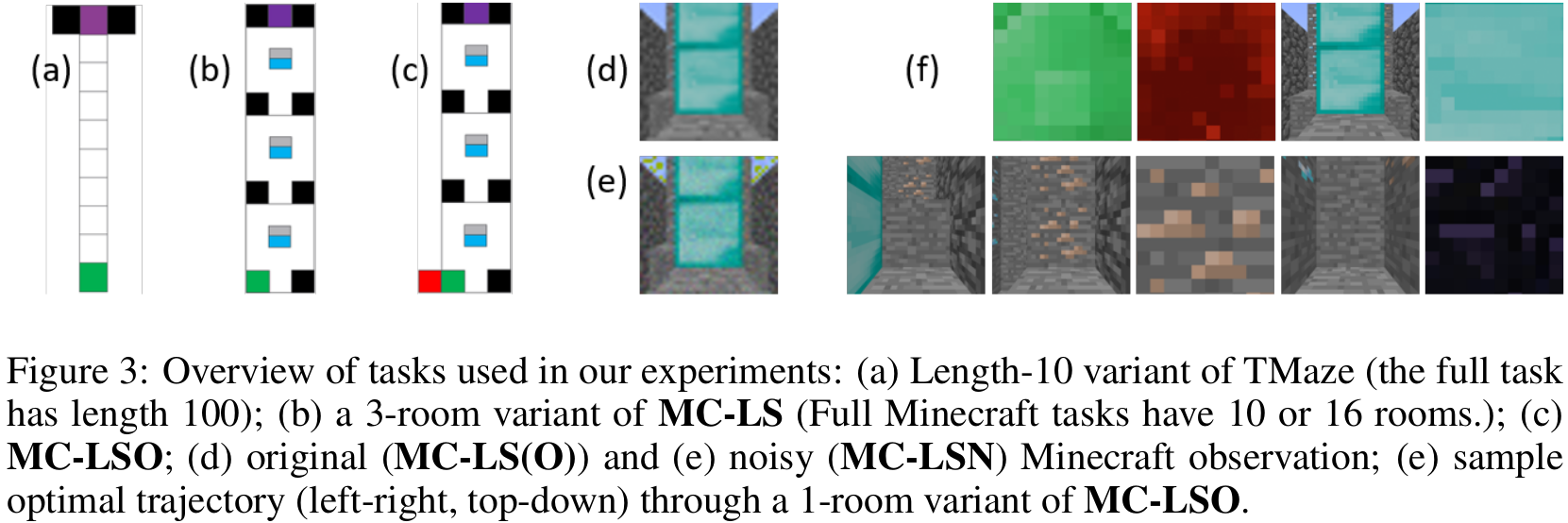
AMRL: Aggregated Memory For Reinforcement Learning
AMRL
Experiments


AMRL
Experiments
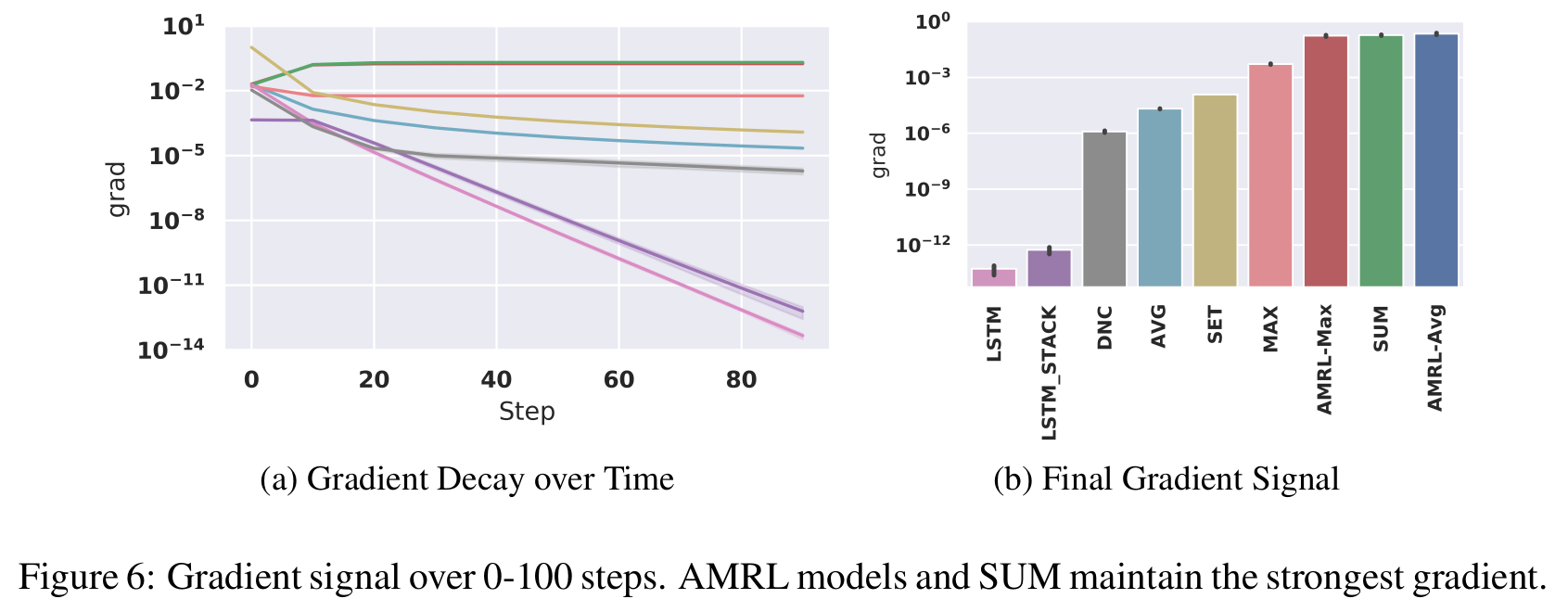
AMRL: Aggregated Memory For Reinforcement Learning
Are rewards enough to learn memory?
-
Learning only by optimizing future rewards
-
A3C/PPO + LSTM
- DRQN, R2D2
- AMRL
-
-
What if we know a little bit more?
- Neural Map
- Working Memory Graphs
-
Learing with rich self-supervised sensory signals
- World Models
- MERLIN
- PlaNet
- Dreamer/ Dreamer-v2 /Dreamer-v3
MERLIN
Unsupervised Predictive Memory in a Goal-Directed Agent
MERLIN has two basic components:
-
Model-Based Predictor
-
a monstrous combination of VAE and Q-function estimator
-
uses simplified DNC under the hood
-
-
Policy
-
no gradients flow between policy and MBR
-
trained with Policy Gradients and GAE
-
MERLIN is trained on-policy in A3C-like manner:
- 192 parallel workers, 1 parameter server
- rollout length is 20-24 steps
VAE:
DNC:
MERLIN
Unsupervised Predictive Memory in a Goal-Directed Agent
Model-Based Predictor:
-
MBR is optimized to be a "world model", i.e. to produce predictions that are consistent with observed trajectories: \(p(o_{0:T}, R_{0:T})\)
-
Compresses observations \(o_t\) into low-dimensional state representations \(z_t\) (inspired by compressive bottleneck theory)
-
Stores all previous representations \(z_{0:t}\) in memory
-
Uses it's memory to predict future: \(o_{t+1}\) and \(R_{t+1}\)
We do this with VAE
we can just predict \(z_{t+1}\)
DNC lives here
MERLIN
MBR Loss
Model-Based Predictor has a loss function based on the variational lower bound:
Reconstruction Loss: KL Loss:



Forces MBR to make good compressed representations \(z_t\); recall VAE
Train memory to make good predictions
We want MBR to make good predictions of observations and Q-values
\(z_{t}\) prediction from memory (steps: 0 .. t-1)
actual compressed representation \(z_t\) given \(o_t\) and memory from (steps: 0 .. t-1)
MERLIN
Memory-Based Predictor
Prior Distribution
Module takes all memory from the previous step and produces parameters of Diagonal Gaussian distribution:
Posterior Distribution
Another MLP \(f^{post}\) takes:
and generates correction for the prior:
At the end, latent state variable \(z_t\) is sampled from posterior distribution.

MERLIN
Architecture
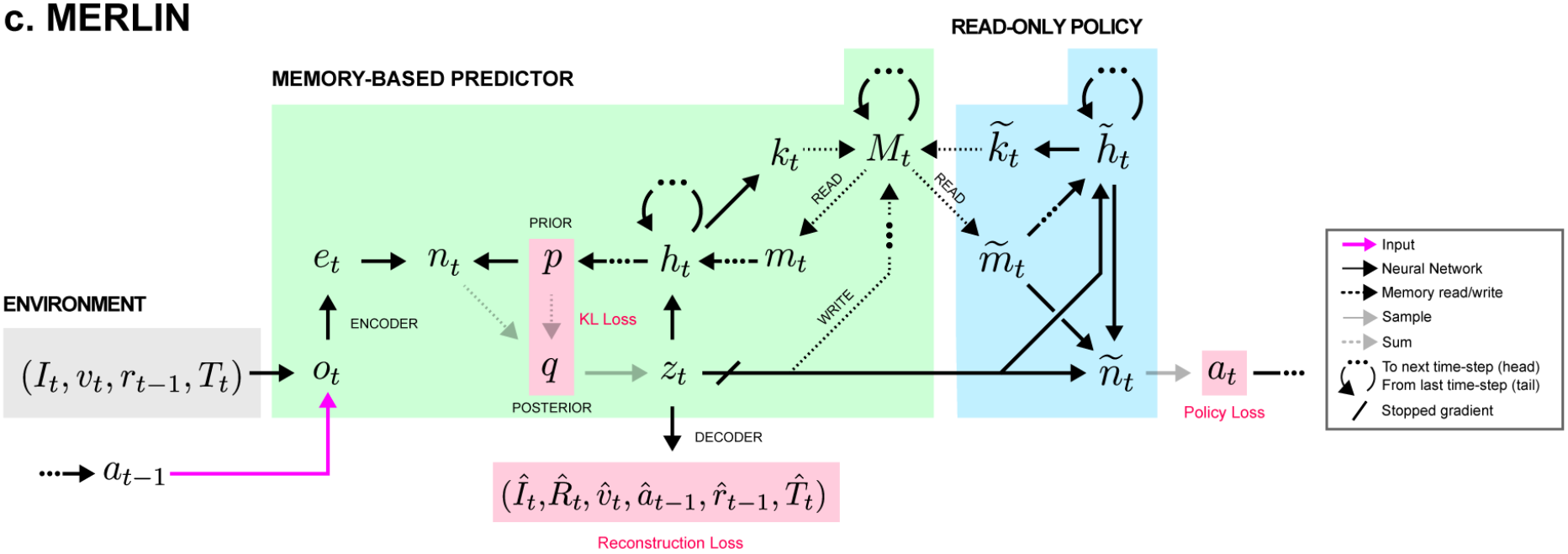
Unsupervised Predictive Memory in a Goal-Directed Agent
MERLIN
Experiments
MERLIN is compared against two baselines: A3C-LSTM, A3C-DNC

MERLIN
Experiments
Unsupervised Predictive Memory in a Goal-Directed Agent
Transformers as Memory in RL
Problem:
- Transformers are unstable when applied in RL setting
HINT: Casts an RL problem as a supervised Learning problem!
Solution:
- Do not use Transformers in RL!
Real Solution:
- Use Transformers in Offline-RL and Imitation Learning
Decision Transformer
Just treat RL as a sequence modeling problem
Solution:
- Do not use Transformers in RL!
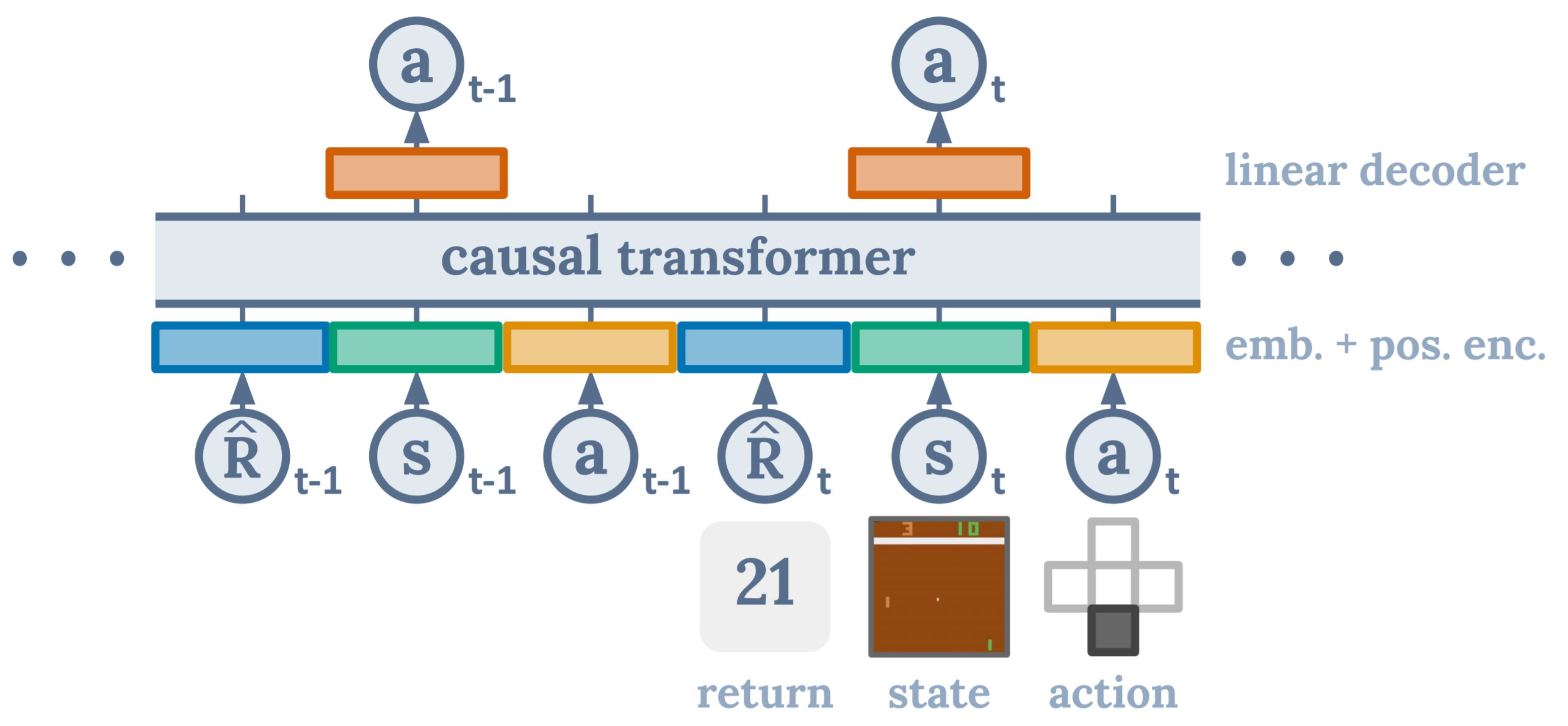
encode each step with three tokens
Reward-to-Go:
\(R_t=\sum^T_{i=t} r_i\)
Decision Transformer: Reinforcement Learning via Sequence Modeling
Decision Transformer
Training Decision Transformer:
- Train as in usual sequence learning task
- Can use suboptimal trajectories
Inference with Decision Transformer:
- Use first Reward-to-go \(R_0\) as promt in regular Transformers
Solution:
- Do not use Transformers in RL!

Decision Transformer: Reinforcement Learning via Sequence Modeling
Trajectory Transformer
Differences with Decision Transformer:
- Each states and actions are split into many tokens
- Uses Beam Search to select actions (see 1.)
- Can learn goal-directed behaviour by using goal state as promt
Solution:
- Do not use Transformers in RL!
Offline Reinforcement Learning as One Big Sequence Modeling Problem

Append goal state here

Results
Decision Transformer:
Solution:
- Do not use Transformers in RL!


Results
Trajectory Transformer:
Solution:
- Do not use Transformers in RL!


Hindsight Information Matching
Trajectory Transformer and Decision Transformer learn to generate tragectories that match with some statistics about the future
Solution:
- Do not use Transformers in RL!
Generalized Decision Transformer:

DT: \(r(s_t, a_t)\)
TT: \(s_t\)
DT: summation
TT: select last
Generalized Decision Transformer for offline Hindsight Information Matching
HIM: Unseen HalfCheetah Task
Future statisitcs: Discretized X-velocity
Solution:
- Do not use Transformers in RL!
Backflipping Dataset
Running Dataset
Results for combined distribution promt:
Generalized Decision Transformer for offline Hindsight Information Matching
HIM: Unseen HalfCheetah Task
Solution:
- Do not use Transformers in RL!

Generalized Decision Transformer for offline Hindsight Information Matching
Stabilizing Transformers for RL
Stabilizing Transformers For Reinforcement Learning
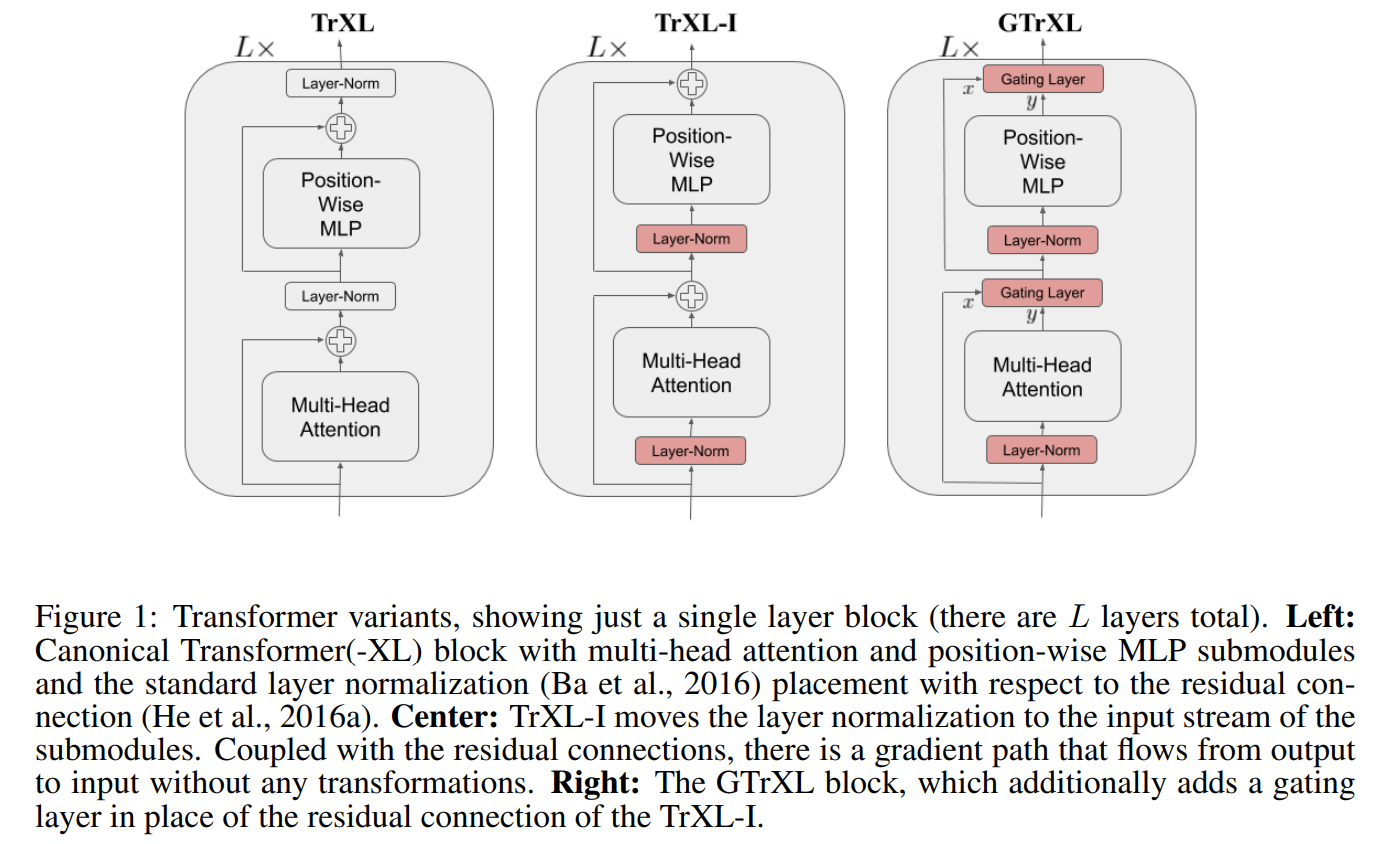
Stabilizing Transformers for RL
Gating Layer
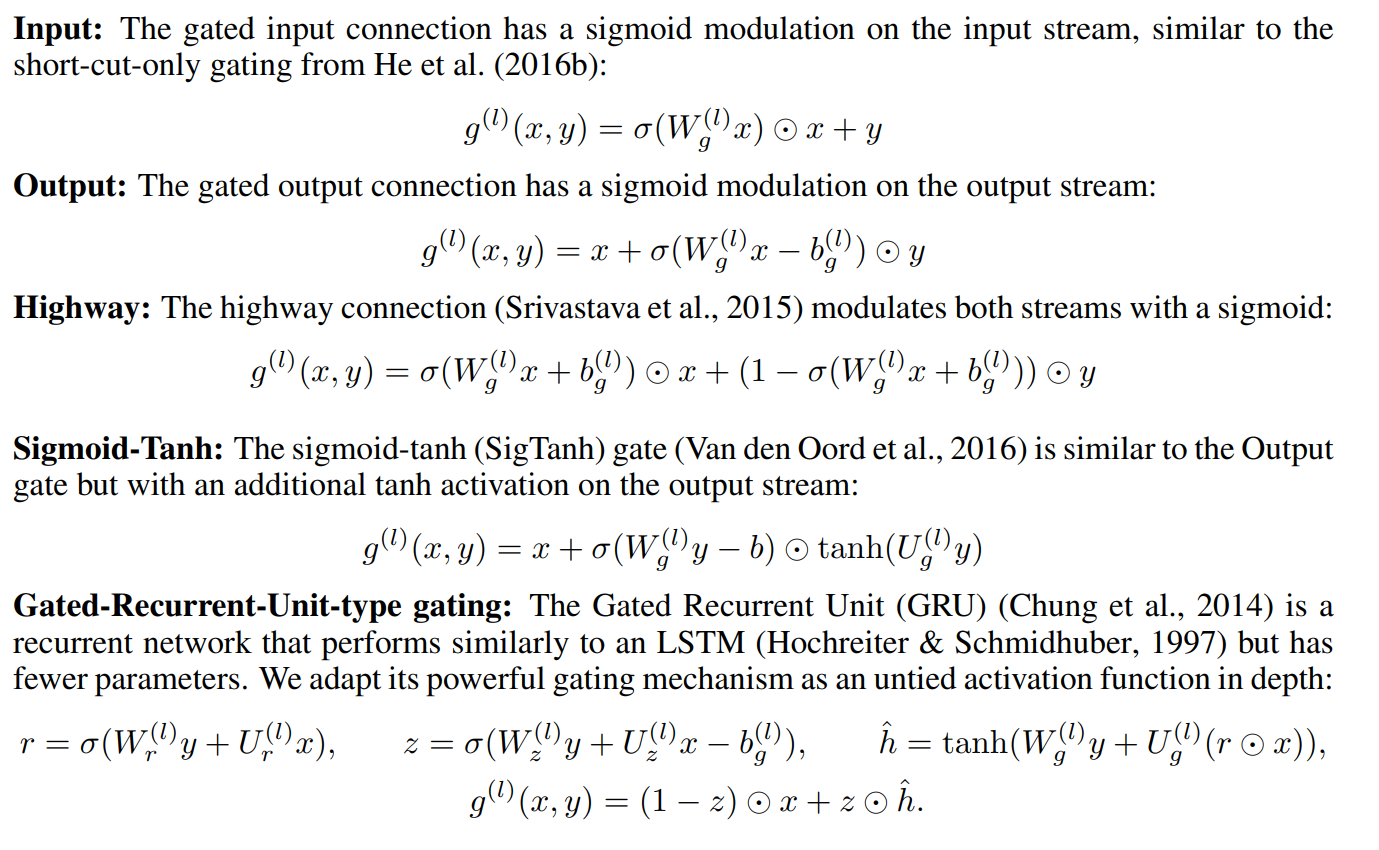
Stabilizing Transformers For Reinforcement Learning
Stabilizing Transformers for RL
Experiments

Stabilizing Transformers For Reinforcement Learning
Stabilizing Transformers for RL
Ablation Study
Stabilizing Transformers For Reinforcement Learning


Hierarchical Chunk Attention Memory
HCAM
Towards mental time travel: a hierarchical memory for reinforcement learning agents

Hierarchical Chunk Attention Memory
Results
Towards mental time travel: a hierarchical memory for reinforcement learning agents

Long delay == 30 seconds

Hierarchical Chunk Attention Memory
Results
Towards mental time travel: a hierarchical memory for reinforcement learning agents

Resume
Recurrent Memory
- LSTM, AMRL are simple to implement
- Still decent performance (in comparison to Transformers)
- Can easily plag and play any RNN model from SL papers
Transformer Memory
- Hard to implement and train in online RL
- Better results if works
- Good in offline RL
- Out of the box Multi-Task and Few-shot learning
Episodic Memory
Extra materials
Memory for MDP?
Neural Networks can't adapt fast:
-
Catastrophic interference i.e knowledge in neural networks is non-local
-
Nature of Gradient Descent
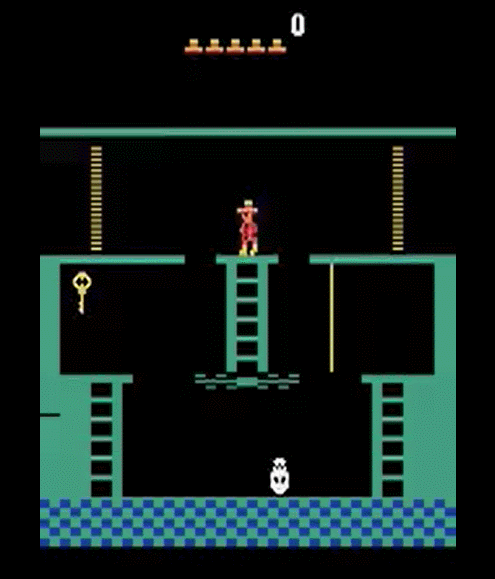
Episodic Memory
Motivation
Semantic memory makes better use of experiences (i.e. better generalization)
Episodic memory requires fewer experiences (i.e. more accurate)
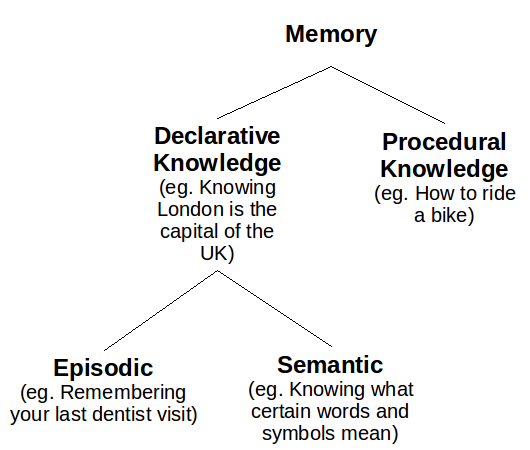
Episodic Memory
Experiment with Tree MDP
"We will show that in general, just as model-free control is better than model-based control after substantial experience, episodic control is better than model-based control after only very limited experience."
A Tree MDP is just a MPD without circles.
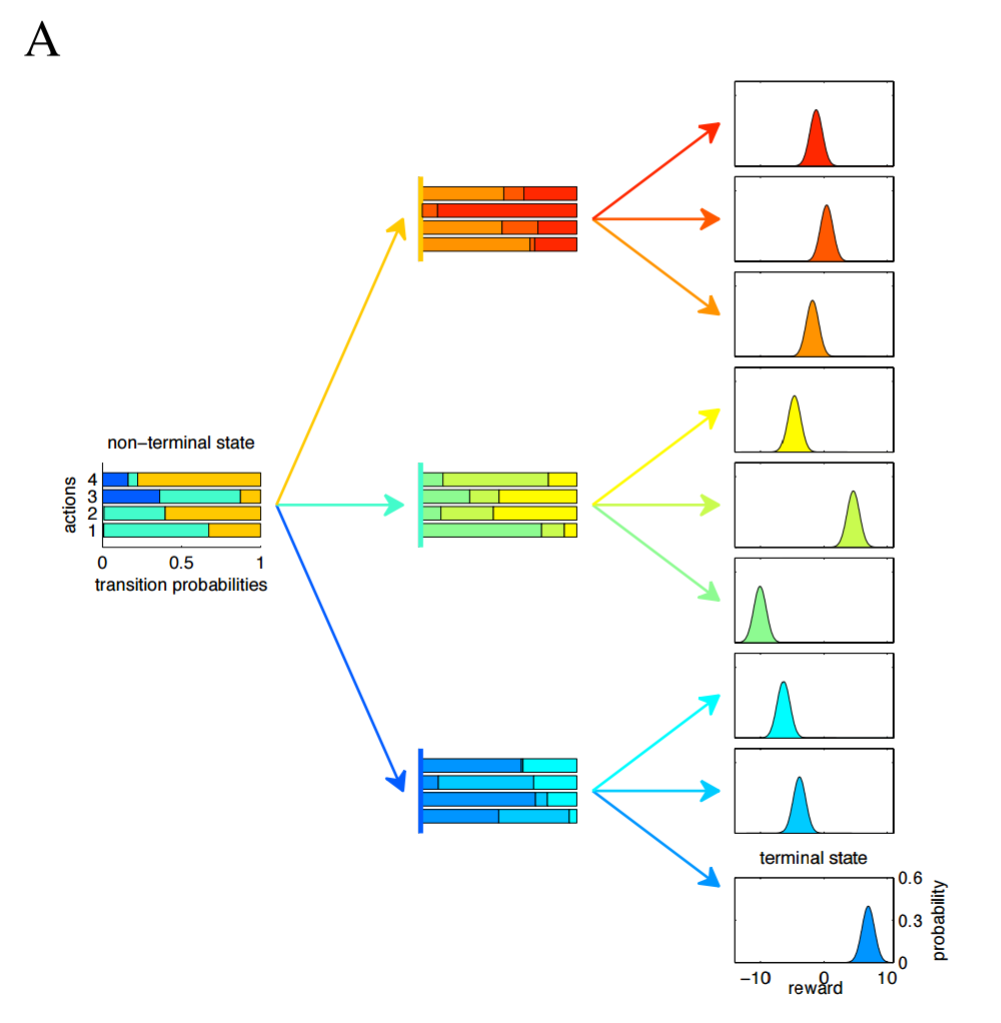
Episodic Memory
Experiment with Tree MDP

Text
Text
A) Tree MDP with branching factor = 2 B) Tree MDP with branching factor = 3 C) Tree MDP with branching factor = 4
Model-Free Episodic Control
Lets store all past experiences in \(|A|\) dictionaries \(Q_{a}^{EC} \)
\(s_t, a_t \) are keys and discounted future rewards \(R_t\) are values.
Dictionary update:
If a state space has a meaningful distance, then we can use k-nearest neightbours to estimate new \((s,a)\) pairs:


Model-Free Episodic Control
Model-Free Episodic Control
Lets store all past experiences in \(|A|\) dictionaries \(Q_{a}^{EC} \)
\(s_t, a_t \) are keys and discounted future rewards \(R_t\) are values.
Dictionary update:
If a state space has a meaningful distance, then we can use k-nearest neightbours to estimate new \((s,a)\) pairs:
Two possible feature compressors for \(s_t\): Random Network, VAE


Model Free Episodic Control
Results
Test environments:
- Some games from Atari 57
- 3D Mazes in DMLab
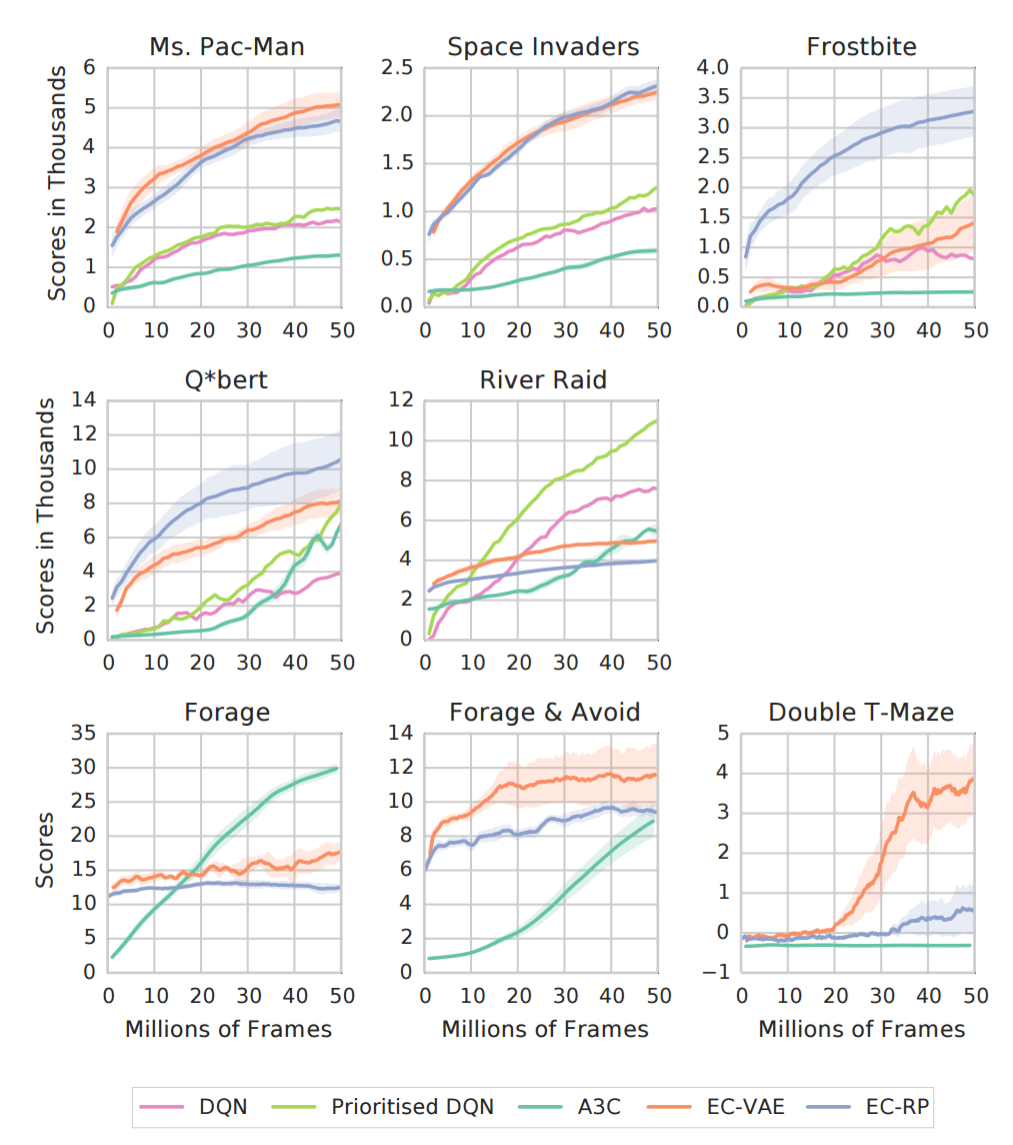
Neural Episodic Control
Deep RL + Semantic Memory
Differences with Model-Free Episodic Control:
-
CNN instead of VAE/RandomNet
-
Differential Neural Dictionaries (DND)
-
Replay Memory like in DQN, but small...
-
CNN and DND learn with gradient descent
Neural Episodic Control
Neural Episodic Control
Differential Neural Dictionaries
For each action \(a \in A \), NEC has a dictionary \(M_a = (K_a , V_a )\).
Keys and Queries are generated by CNN

Neural Episodic Control
Differential Neural Dictionaries
To estimate \(Q(s_t, a)\) we sample p-nearest neighbors from \(M_a\)
\(k\) is a kernel for distance estimate. In experiments:


Neural Episodic Control
DND Update
Once a key \(h_t\) is queried from a DND, that key and its corresponding output are appended to the DND. If \(h_t \not\in M_a\) then we just store it with N-step Q-value estimate:
otherwise, we update stored value with tabular Q-learning rule:


Learn DND and CNN-encoder:
Sample mini-batches from replay buffer that stores triplets \((s_t,a_t, R_t)\) and use \(R_t\) as a target.
Neural Episodic Control
Replay Buffer here \(\ne\) DND
Neural Episodic Control
Experiments
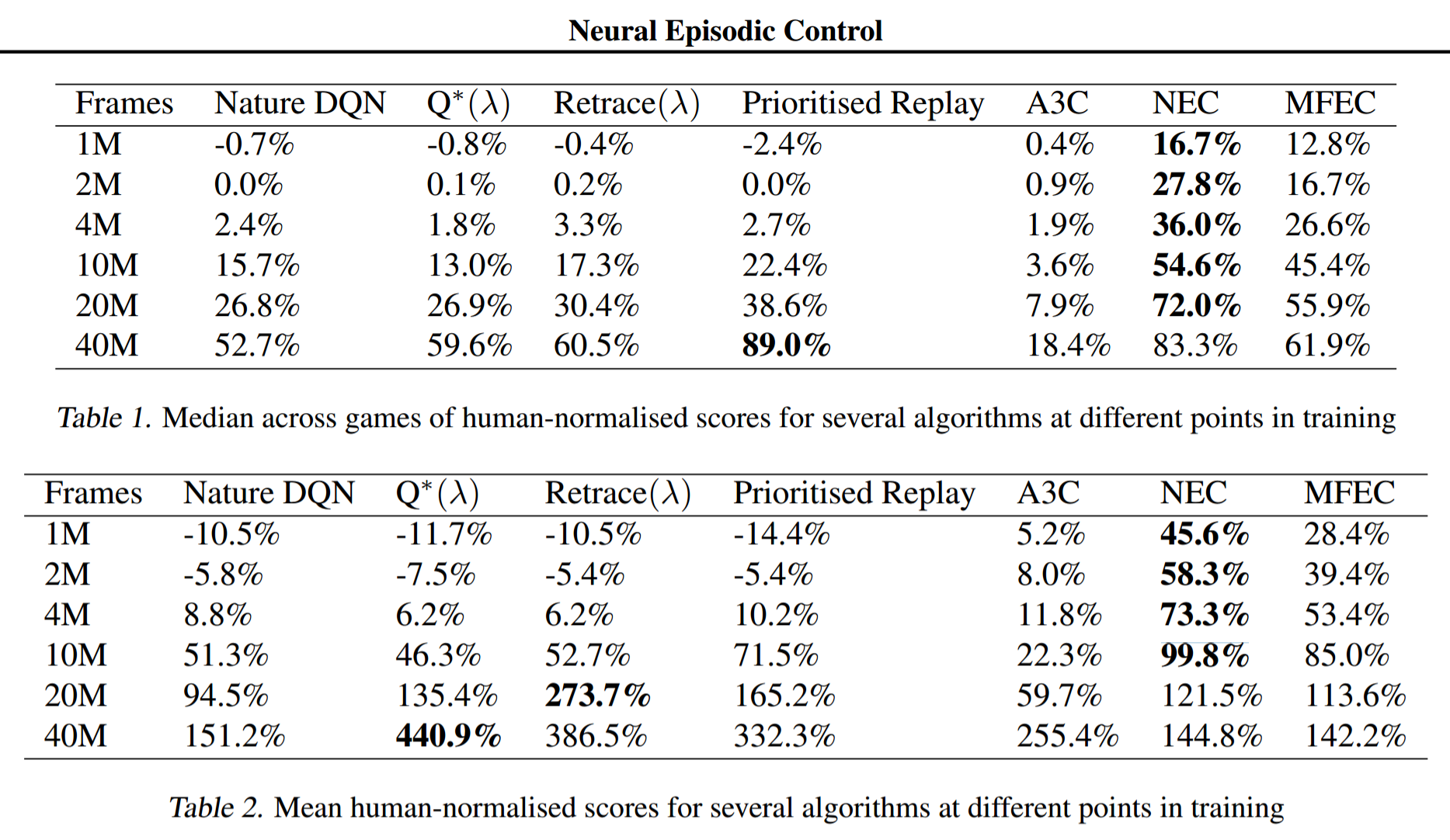
Neural Episodic Control
Experiments
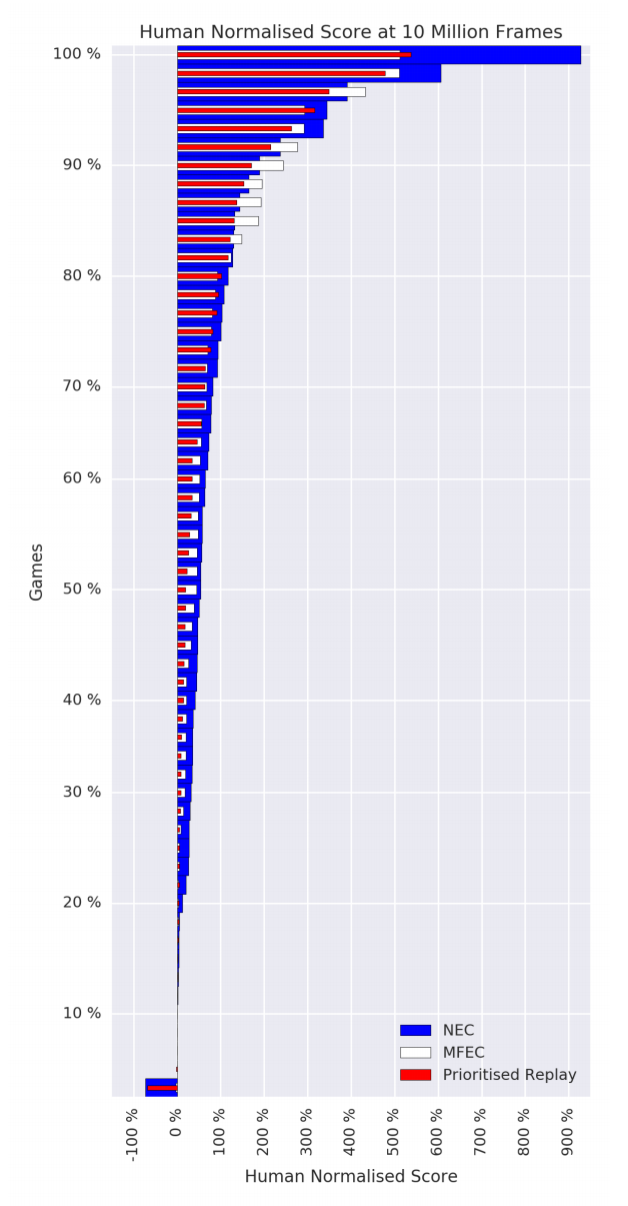
Neural Episodic Control
Resume
Working Memory
- Can Generalize
- Hard to increase capacity
Episodic Memory
- Hard to generalize
- Can store a lot of information
Thank you for your attention!
09-Memory in RL (v2)
By supergriver
09-Memory in RL (v2)
- 593



